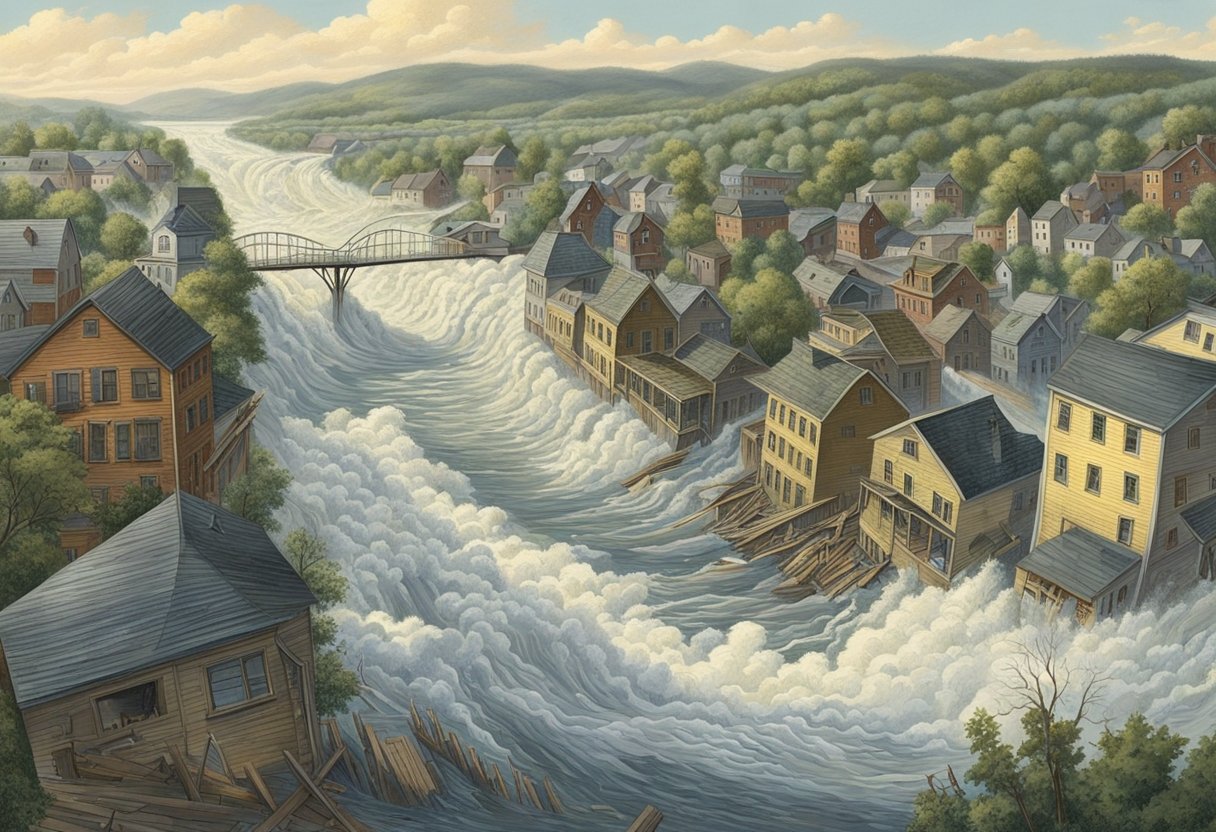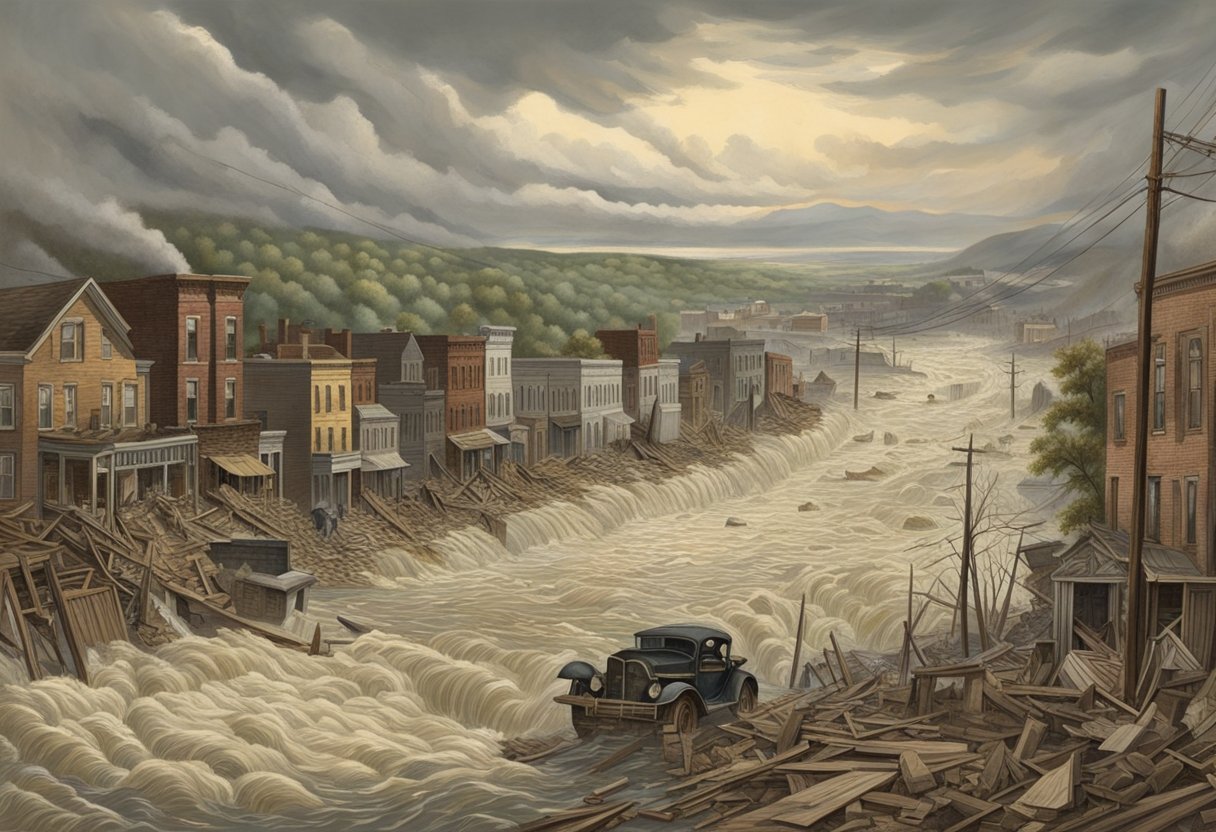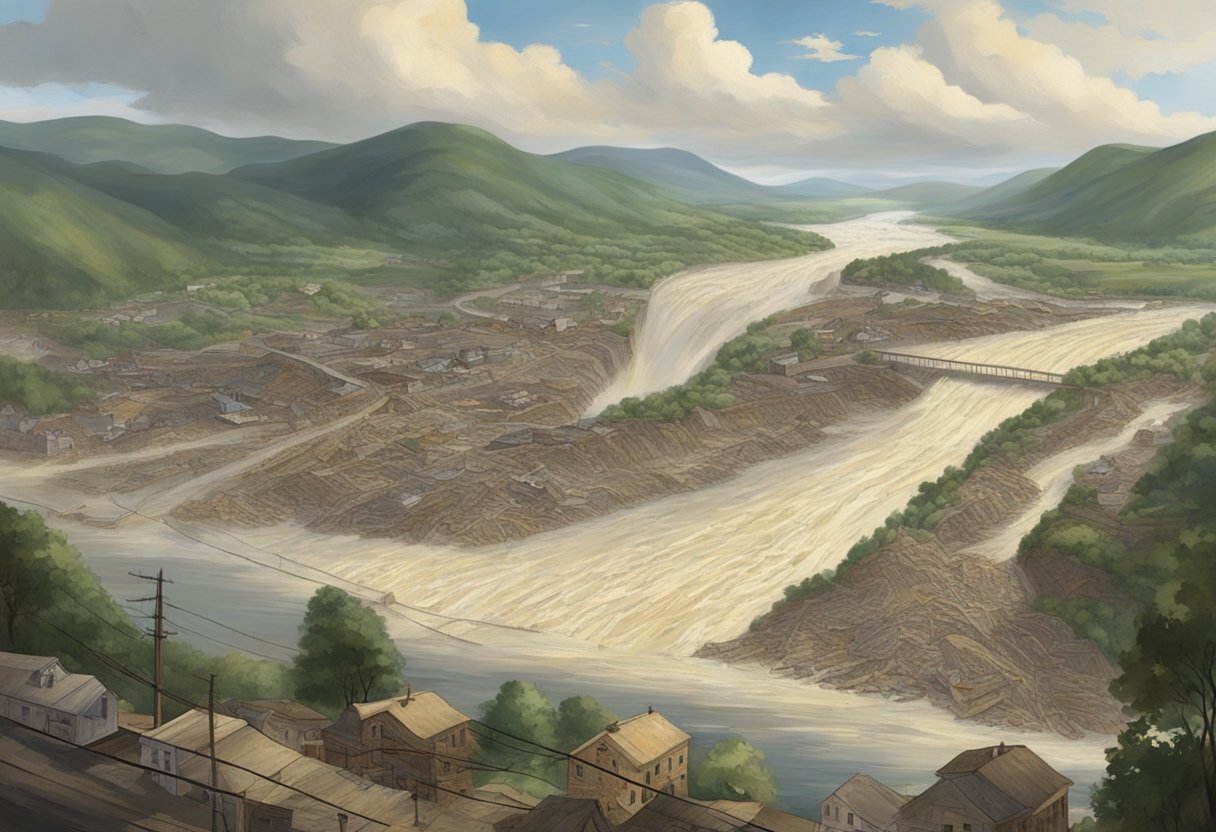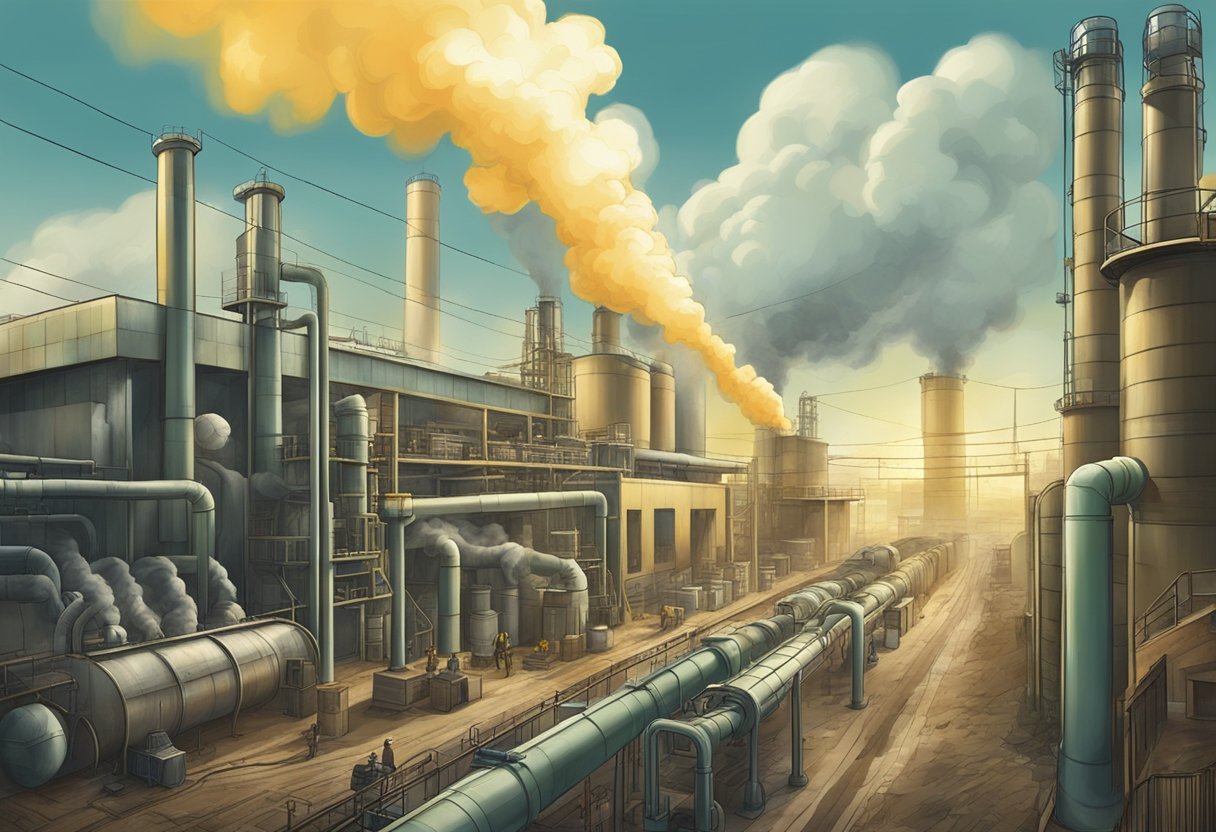The Johnstown Flood Disaster of 1889: Catastrophic Engineering Failures and Tremendous Human Cost

On May 31, 1889, Johnstown, Pennsylvania, witnessed one of the deadliest disasters in American history when the South Fork Dam failed catastrophically, flooding the town below. Heavy rainfall caused the dam, already weak due to improper maintenance, to burst, releasing 14.55 million cubic meters of water. This tragic event, known as the Johnstown Flood, highlighted severe engineering failures and resulted in over 2,200 deaths.
The floodwaters traveled at 40 miles per hour, forming a wave nearly 40 feet high that swept through Johnstown with destructive force. The disaster not only decimated the town but also underscored the dire consequences of neglecting infrastructure safety. Despite the technological advancements of the era, the South Fork Dam's failure was a grim reminder of the human cost associated with engineering oversights.
The Johnstown Flood also marked a significant moment in disaster relief history. The American Red Cross, led by Clara Barton, conducted its first major peacetime relief effort, bringing much-needed aid to the devastated community. This catastrophe serves as an enduring lesson on the importance of diligent engineering practices and robust emergency preparedness.
Historical Context
The Johnstown Flood of 1889 was one of the deadliest disasters in U.S. history. It resulted from a combination of structural failures and severe weather conditions.
Buildup to the Catastrophe
In the early 19th century, the South Fork Dam was built as part of Pennsylvania's Main Line of Public Works. It was located in the Allegheny Mountains, holding back the waters of the Lake Conemaugh reservoir. By the mid-1800s, the dam fell into disrepair.
A group of wealthy industrialists from Pittsburgh purchased the reservoir in the late 1870s. They made modifications that weakened the dam’s structure. These changes included lowering the top of the dam and installing fish screens, which clogged overflow pipes. Continuous poor maintenance over the years worsened its condition.
An unusually heavy rainfall began days before the disaster. This rain added immense pressure on the already fragile structure. Despite known issues, no significant preventive measures were taken.
The Day of the Disaster: May 31, 1889
On May 31, 1889, after days of heavy rain, the South Fork Dam failed. At approximately 3:00 PM, an estimated 20 million tons of water swept through the Conemaugh Valley toward Johnstown.
The floodwaters moved at incredible speeds, annihilating everything in their path. Buildings, bridges, and railroads from the town were wiped out or severely damaged. Survivors reported a terrifying wall of water bearing down, carrying debris and wreckage.
The aftermath was catastrophic for the town and surrounding areas. Homes were destroyed, lives were lost, and the community faced utter devastation. The event highlighted the dire consequences of negligent engineering and the importance of proper dam maintenance.
Engineering Insights

Failures in the design and maintenance of the South Fork Dam led to devastating consequences. Several engineering aspects, including dam construction, hydraulic issues, and geotechnical problems, were critically flawed.
Faulty Dam Engineering
The South Fork Dam, built originally in the 1850s, experienced several engineering errors. The dam was poorly maintained and improperly modified, which a series of civil engineers poorly oversaw.
One of the most critical errors was the ineffective spillway design. The spillway could not handle heavy water flow, leading to overtopping. When water overflowed the dam, it quickly eroded the dam structure.
Additionally, the dam's original design was altered by lowering and widening the top, which severely weakened its resilience. These changes made the dam more prone to failure under excessive hydraulic pressure.
Hydraulic and Geotechnical Failures
Hydraulic and geotechnical engineering issues compounded the South Fork Dam's problems. The area around the dam was prone to heavy rainfall, greatly increasing water pressure on the dam structure.
Hydraulics: The spillway's capacity was inadequate, causing water to overflow. As water overtopped, it led to rapid erosion of the dam's crest and slopes, weakening the structure.
Geotechnical Issues: The soil and materials used for the dam lacked the necessary cohesion and stability. This instability contributed to static liquefaction, where saturated soil lost its strength and stiffness, causing the dam to fail rapidly under pressure.
Erosion: Continuous water flow caused extensive erosion at the base, undermining the dam's integrity. This gradual wear went unnoticed due to poor monitoring and maintenance.
Contemporary Engineering Standards
Modern engineering practices and standards have evolved significantly since the 1889 disaster. Lessons learned from the Johnstown Flood have been integrated into contemporary civil and geotechnical engineering.
Design: Today, dams incorporate advanced design techniques that account for environmental factors. Spillways are designed based on worst-case scenarios of water flow, ensuring sufficient capacity.
Materials: Engineers now use more robust and cohesive materials that prevent erosion and withstand hydraulic pressures. For instance, modern dams often use concrete and metal reinforcements.
Monitoring: Regular inspections and maintenance are mandatory. Advanced technology, such as sensors and automated systems, help monitor dam stability and detect early signs of potential failure.
Regulations: Strict government regulations and guidelines ensure that all dams meet safety standards. The U.S. Army Corps of Engineers plays a significant role in overseeing and maintaining these structures. These enhancements aim to prevent tragedies like the Johnstown Flood, prioritizing safety and resilience in dam engineering.
Impact and Response

The Johnstown Flood of 1889 caused widespread destruction and loss of life. Relief efforts played a crucial role in helping the community recover from this catastrophic event.
Immediate Aftermath and Rescue Efforts
In the immediate aftermath, the scene in Johnstown was one of utter devastation. The floodwaters obliterated homes, businesses, and entire neighborhoods. Approximately 2,209 people lost their lives. Survivors were left injured and homeless, surrounded by mountains of debris and wreckage.
Rescue efforts began almost immediately. Local citizens and volunteers from nearby towns rushed to help, risking their own safety to save others. Many acted quickly to pull people from the wreckage and provide medical care. The scale and speed of the disaster overwhelmed local resources, making immediate assistance crucial.
The Role of the American Red Cross
The American Red Cross, led by Clara Barton, arrived in Johnstown on June 5, 1889. This marked the organization’s first major peacetime disaster relief effort. Barton's leadership was instrumental in organizing a coordinated response.
They set up makeshift hospitals and shelters, distributed food, clothing, and medical supplies, and offered emotional support to survivors. Red Cross volunteers worked tirelessly to alleviate the suffering and stabilize the situation. Their presence was a beacon of hope for many who had lost everything.
Reconstruction and Recovery
Rebuilding Johnstown was a monumental task. The immediate focus was on clearing debris and restoring basic services like clean water and sanitation. Engineers and construction workers faced the enormous challenge of rebuilding infrastructure from scratch.
Financial aid and donations poured in from across the country. Funds were used to reconstruct homes, businesses, and public buildings. Despite the tragedy, the community showed resilience. Within a few years, Johnstown was largely rebuilt, though scars from the disaster remained. The flood had lasting effects, pushing advancements in civil engineering and disaster management. Tables, lists, and other formatted structures provided information succinctly and clearly.
Human and Cultural Cost

The Johnstown Flood of 1889 caused profound loss and upheaval, impacting lives and the community deeply. Both the human toll and the broader social and economic effects were severe.
Loss of Life and Property
The Johnstown Flood claimed the lives of more than 2,200 people, making it one of the deadliest disasters in US history. Entire families were swept away, and the death toll included many children. Property damage was extensive, with more than 1,600 homes destroyed. Downtown Johnstown was left in ruins, with debris piling up to 40 feet high in some areas.
Many survivors were left without shelter and basic necessities. The flood victims faced harsh conditions, and rescue efforts were hindered by the overwhelming scale of the disaster. The American Red Cross, led by Clara Barton, provided crucial assistance, marking its first major peacetime disaster relief effort.
Social and Economic Ramifications
The social fabric of Cambria County was deeply affected. Communities had to cope with the sudden loss of friends and family members. Economic impacts were substantial, as the flood wiped out businesses and industries in downtown Johnstown. Jobs were lost and many people found themselves struggling to rebuild their lives.
Reconstruction was a slow and painful process. The local economy suffered for years as efforts to recover and rebuild dragged on. The disaster highlighted the inadequacies in emergency preparedness and had long-lasting effects on the population. The cultural identity of Johnstown changed as the community came together to rebuild and honor the memory of those who perished.
Legal and Social Outcomes

The Johnstown Flood of 1889 led to significant legal debates and shifted public perspectives on engineering and responsibility. This disaster exposed flaws in both civil planning and societal safeguards.
Legal Repercussions and Liability
In the aftermath, many survivors sought justice. They blamed the South Fork Hunting and Fishing Club, which owned the dam. Despite clear negligence, strict liability wasn’t enforced. Courts ruled in favor of the club, claiming natural forces as the primary cause. This lack of accountability frustrated many and highlighted gaps in the legal system.
Engineering Ethics and Responsibilities
The flood forced a reevaluation of engineering ethics. Professionals scrutinized the dam’s poor maintenance and flawed design. Engineers learned that disregarding safety for convenience or cost can have catastrophic results. The disaster underscored the importance of integrity and responsibility in engineering practices. It influenced changes in engineering standards.
Public Perception and Historical Legacy
Public perception of the disaster was intense and emotional. Many viewed it as a tragic lesson in human error and corporate neglect. Historical accounts, like those by David McCullough, solidified its legacy. The Pennsylvania General Assembly enacted reforms to prevent similar disasters. The flood remains a stark reminder of the need for stringent disaster relief and preparedness.
Prevention and Lessons Learned
The Johnstown Flood of 1889 highlighted critical flaws in engineering and disaster preparedness. Various measures were taken to prevent similar tragedies, focusing on improved flood control, better infrastructure, and effective warning systems.
Improved Flood Control Measures
Engineering advancements after the Johnstown Flood emphasized the importance of robust dam construction and regular maintenance. The South Fork Dam's failure drew attention to the negligence in upkeep and design flaws. Modern flood control methods now include meticulous inspections, reinforced dam structures, and the incorporation of spillways to manage overflow.
The failure also impacted legislation, leading to stricter regulations for privately-owned dams. The Pennsylvania Canal system, once vital for transportation, saw enhanced safety protocols. Lessons from the 1889 flood were integrated into managing other waterways, including railroads that often operated near such structures.
Infrastructure and Warning Systems
Infrastructure improvements played a key role in preventing future disasters. After the flood, more resilient materials and construction techniques were used in building dams and levees. The catastrophic event underscored the need for reliable warning systems.
Early forms of telegraph lines and later, radio broadcasts, helped in spreading flood alerts. Today, advanced weather forecasting technologies and real-time monitoring systems ensure communities receive timely warnings. The tragic loss of life spurred authorities to establish clear evacuation routes and stronger communication channels across towns and cities.
The Influence on Future Disaster Management
The Johnstown Flood's influence extended beyond infrastructure changes, shaping how future natural disasters were managed. The American Red Cross, led by Clara Barton, provided significant relief efforts, setting a precedent for organized disaster response.
The National Park Service now preserves the history of Johnstown, reinforcing the importance of learning from past mistakes. Subsequent floods in Johnstown, especially the 1977 flood, saw more coordinated emergency responses due to lessons learned in 1889.
The need for comprehensive disaster plans involving all stakeholders became evident. These plans now include community education, regular drills, and multi-agency cooperation to minimize the impact of such events.




